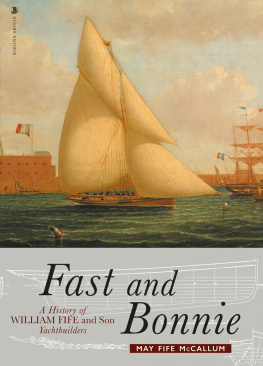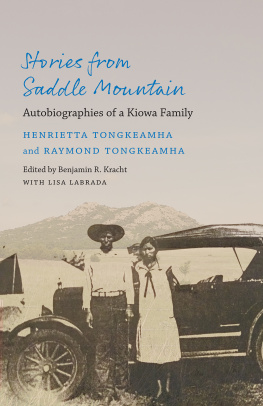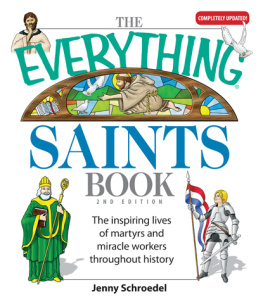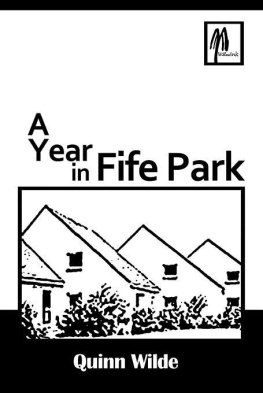
Barakaldo Books 2020, all rights reserved. No part of this publication may be reproduced, stored in a retrieval system or transmitted by any means, electrical, mechanical or otherwise without the written permission of the copyright holder.
Publishers Note
Although in most cases we have retained the Authors original spelling and grammar to authentically reproduce the work of the Author and the original intent of such material, some additional notes and clarifications have been added for the modern readers benefit.
We have also made every effort to include all maps and illustrations of the original edition the limitations of formatting do not allow of including larger maps, we will upload as many of these maps as possible.
Saints of Sage & Saddle
FOLKLORE AMONG THE MORMONS
BY
AUSTIN AND ALTA FIFE
Seventy-three years after the first Mormon settlers laid out their farms at Providence, Cache Valley, Utah, Austin E. Fife and Alta Stephens met on the campus of Utah State College in that same valley. With the years their friendship ripened into marriage and parenthood, an apprenticeship in the humanities at Stanford and Harvard universities, research and field work in the realms of folklore and Mormon culture, and finally the authorship of SAINTS OF SAGE AND SADDLE.
Their goal for this book was to gather at their oral sources the lore, the legends, the reminiscences that constitute the epic of the Mormon West, striving to preserve and understand all of the traditional, the folk devices by which the Mormon has related himself to society and the cosmos.
Dr. Fife now teaches at Occidental College in Los Angeles while Mrs. Fife keeps the miners stew of Mormon folklore brewing generally.
Table of Contents
Contents
Table of Contents
REQUEST FROM THE PUBLISHER
DEDICATION
TO
Carolyn and Marian
WHO, IN THEIR MATURE YEARS, MAY DISCOVER
HEREIN SOMEWHAT OF THEIR PARENTS, AND A
LITTLE OF THEMSELVES
Acknowledgments
THE sources of information for this study are so numerous and so varied that an exhaustive expression of appreciation would expand too greatly the dimensions of the book. Our greatest debt is to the hundreds of oral informants, not only from Utah, but from nearly every community that has been the setting for Mormon history and loreall the way from Vermont, birthplace of Joseph Smith and Brigham Young, to the Pacific Coast, Much is owed to the Utah Humanities Research Foundation; Utah State Historical Society; the L.D.S. Church Historians Library; the Palmyra, New York, Historical Library; the Huntington Library of San Marino, California; the Archive of Folksong of the Library of Congress; and the Rockefeller Foundation project of Occidental College, Los Angeles.
We are indebted also to Cora Burt Lauridsen for transcription of music; Hector Lee, Juanita Brooks, and Wayland D. Hand for unlimited assistance in the accumulation, organization, and presentation of our materials; A.M. Espinosa, Sr., for introducing us to the materials and methods of folklore; Stith Thompson and Bernard B. Perry for betting that time and toil could turn a rough manuscript into a readable work; Hector Lee, Dale Morgan, Mable Jarvis, M. S. MacCarthy, Myron Crandall, Otho Murphy, Buck Lee, Mary M. Pogue, and F. M. Keller for placing valuable materials at our disposal.
Illustrations
Seagull Monument, Salt Lake City
Cemetery, Florence, Nebraska
Jail at Carthage, Illinois
Jail at CarthageInterior
Great White Throne, Zion Canyon, Utah
Dream Mine, Salem, Utah
Two-Room Adobe with Porch and Rear Annex, Moab, Utah
Two-Story Cellar, Moab, Utah
Horsehair Hackamore, Moab, Utah
Star Quilt, Moab, Utah
Utah Valley at Salem
Wagon-Wheel Gate Hinge, Moab, Utah
Rip-Gut Fence, Orderville, Utah
Hay Derrick, Central Utah
Temple, Mesa, Arizona
Temple, Manti, Utah
Preface
IN A SENSE this book is of a personal nature. Reversing the formula of Montaigne, who attempted to paint himself because therein he saw an image of humanity, we have attempted to delineate the image of our own cultural environment so that therein we might the better see ourselves.
Ours is a uniquely American heritage. We are children of hinterland theology and of hinterland living. Our grandparents, preferring the ascetic fanaticism of Saints to the servile humility of bondsmen, deserted the fields and factories of Britain for the expansive wastelands of the Great Basinthe gloomy doctrines of Calvin for the dreamy promises of Joseph Smith.
In this work we have sought the authenticity not of history but of folklore. We have tried to seek out and describe that which has been most typical and most tenacious among the Mormon folk. In chapters dealing with the origins of the church, its founders and early heroes, we have tried to view the materials less as historical data than as legendnot as they actually were, but as they have been viewed by the folk. Let us illustrate: One of our stories is about an Indian who was healed by Joe Darton in the early days of Utah. The Indian returns to his benefactor to say, Me okay now! Some may exclaim: But okay is a word of recent origin! How could an Indian have used it? We reply: We didnt interview either the Indian or Joe Darton. John Hutchings of Lehi told us the story and that is the way he tells it. No service would be done to history and some disservice to folklore if we were to convert the dialogue into the pidgin English of a Ute Indian of the eighteen-sixties. When the last treatise on the philosophy of history has been written, it may end with the simple statement: The most any historian may hope to do is to discipline a little bit the legends, the folklore of a people.
Most readers outside the church, even many Mormons, will be shocked by the place of miracles and the supernatural in the lore of Mormonia. But it must be recalled that Mormonism owes its very being to belief in modern revelation; that the Articles of Faith, memorized by all young Mormons, is a magna carta for the principle of divine intercession in the affairs of man. In so far as authorities of the church have striven to silence exaggerated accounts of the supernatural in recent years, their stand is inconsistent with the principles on which the church was founded. The impact of their admonitions among the folk has been somewhat less than they might hope. In fact, we are of the opinion that in any culture whatsoever the cold logic of cause and effect is apt to break down in the minds of the persecuted, the afflicted, the wretched, and the senile. The scientific frame of mind requires the four freedoms quite as much as do political and social institutions.
Mormonia must not be conceived as a static thing: change rather than stability is characteristic of all American life. It is almost as if the colonists had entered into a conspiracy to abandon as many of their European mores as possible. This gave innovators such as Smith fertile soil for the planting of seeds that were less abortive than many have proclaimed, and from which unpredictable harvests are still being reaped.














